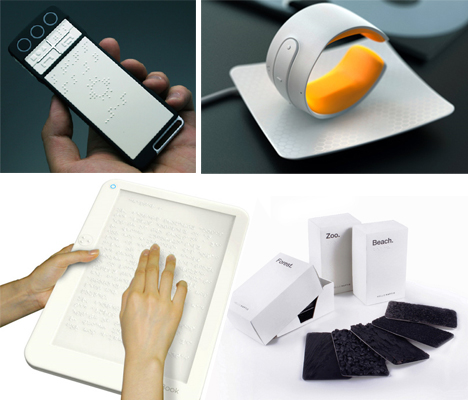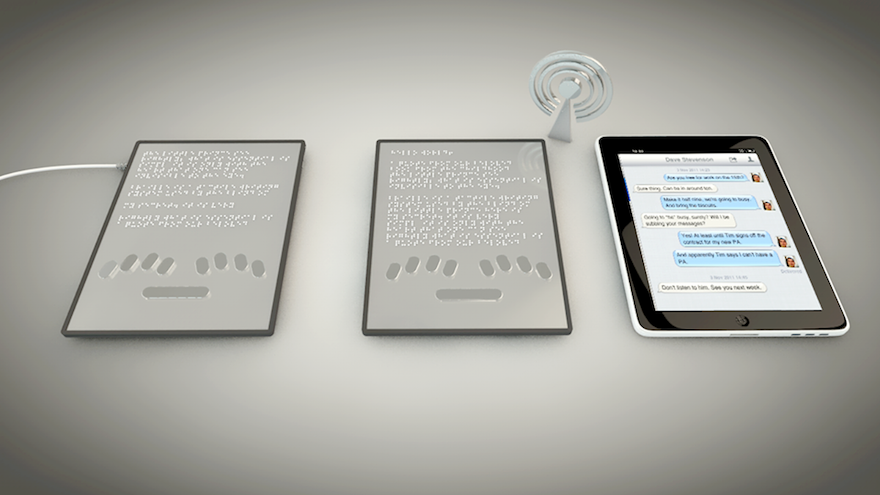Mobility Aids for Visually Impaired Users: Navigating the World with Confidence
Mobility Aids for Visually Impaired Users: Navigating the World with Confidence
Blog Article
Empowering Freedom With Assistive Innovation for the Blind
The integration of assistive innovation into the lives of individuals with aesthetic impairments represents a considerable development in promoting self-reliance and self-sufficiency. From cutting-edge display visitors to advanced clever walking sticks, these tools not just improve daily navigating and communication yet additionally equip customers to involve meaningfully in numerous facets of life. As we discover the myriad benefits and real-world applications of these innovations, it becomes important to analyze the underlying aspects that add to their effectiveness and the possibility for future growths in this essential field.
Overview of Assistive Technology

The advancement of assistive innovation is grounded in concepts of inclusivity and empowerment. Developments in software, equipment, and sensory enhancements give users with options customized to their certain demands. From screen visitors that transform text to speech, to responsive devices that communicate details through touch, these tools change the method people involve with their surroundings.
In addition to practical applications, assistive modern technology cultivates higher social incorporation and engagement in numerous markets, consisting of education and work (Braille displays and notetakers). As r & d remain to evolve, the possibility for assistive modern technology to additionally improve the lives of visually damaged people remains appealing, leading the means for an extra equitable society where everyone can grow
Types of Assistive Devices
A variety of assistive gadgets have actually emerged to sustain individuals with aesthetic problems, each created to satisfy particular demands and enhance everyday performance. These devices range from low-tech solutions to state-of-the-art developments, providing varied alternatives for individuals.
Low-tech tools include magnifiers and large-print materials that assist in reading and writing. Braille devices, such as Braille slates and styluses, make it possible for responsive analysis and communication. Orientation and movement aids, like white canes, aid customers browse their environment safely.
On the greater end of the range, digital magnification systems and display readers offer significant support. Electronic magnifiers allow customers to enlarge message and photos on screens, while screen viewers convert digital material into manufactured speech, assisting in access to information on computer systems and smart devices.
Smart device applications additionally play a critical function, giving features like text recognition and navigation assistance. Wearable innovation, such as wise glasses equipped with increased truth, is arising as an appealing device to boost situational awareness.
Benefits of Assistive Technology
The combination of assistive technology dramatically boosts the lifestyle for people with aesthetic problems. These modern technologies empower users by promoting freedom, enabling them to browse their environments better and do day-to-day tasks with greater simplicity. Display visitors and magnification software application permit people to gain access to digital information, fostering academic and expert opportunities that might have formerly been out of reach.
Moreover, assistive gadgets such as wise walking canes and general practitioners applications give real-time navigating help, improving wheelchair and security. This enhanced autonomy not just boosts self-worth yet likewise motivates social interaction, permitting users to take part more totally in their communities.
Assistive technology likewise helps with interaction, aiding users get in touch with others through voice recognition and text-to-speech applications. This capacity is vital for keeping connections and accessing critical info.
Additionally, the customization urgent care eye doctor options readily available with lots of assistive technologies ensure that customers can tailor tools to their certain demands, additionally enhancing usability and performance. Generally, the benefits of assistive innovation for people with aesthetic problems are profound, promoting an extra comprehensive culture where every person can seek their goals and goals.
Situation Research Studies and Success Stories
Highlighting the transformative impact of assistive technology, countless situation researches show exactly how individuals with aesthetic problems have actually successfully integrated these devices right into their day-to-day lives. One engaging instance includes a college trainee who used display analysis software application to browse academic products and on-line sources efficiently. This technology not just promoted her education and learning however additionally boosted her confidence in taking part in discussions and team tasks.
One more study features an expert that employs a smart device application made for navigation and things recognition. By using this app, he has regained autonomy in both his individual and workplace, permitting him to commute independently and engage with coworkers better.
Furthermore, a retired person shared her experience with braille e-readers, which enabled her to access a vast array of literary works and stay connected with her community via publication clubs.
These success tales emphasize the vital duty of assistive technology in cultivating self-reliance, enhancing lifestyle, and promoting social integration for people with visual impairments (Speech-to-text devices for low vision). By welcoming these innovative devices, customers can conquer difficulties and seize opportunities that add to their personal and specialist gratification

Future Trends in Assistive Technology
Advancement in assistive technology is positioned to redefine the landscape of support for people with visual problems. Arising fads emphasize the combination of fabricated knowledge (AI) and machine learning, which improve the capability of gadgets that aid try this site with navigation and info accessibility. For instance, AI-driven applications are currently with the ability of analyzing visual data in real-time, making it possible for individuals to involve with their atmosphere a lot more independently.
Moreover, the growth of wearable innovation is progressing swiftly. Smart glasses outfitted with augmented reality (AR) can give audio summaries of environments, transforming just how customers engage with public rooms. These gadgets not only advertise freedom yet additionally foster social inclusion.
Furthermore, the Internet of Points (IoT) is making homes smarter, permitting seamless connection in between assistive gadgets and daily devices. This connection encourages users by making it possible for automated reactions and voice-activated controls customized to private demands.
Verdict
In final thought, assistive modern technology plays a crucial role in equipping people with aesthetic impairments by boosting their independence and engagement with their environments. The varied series of gadgets and applications available not just promotes navigating and interaction yet also promotes social assimilation and opportunities for individual and specialist growth. As improvements continue in this area, the possibility for improving the lifestyle for those with aesthetic impairments will expand, fostering higher freedom and empowerment.

Report this page